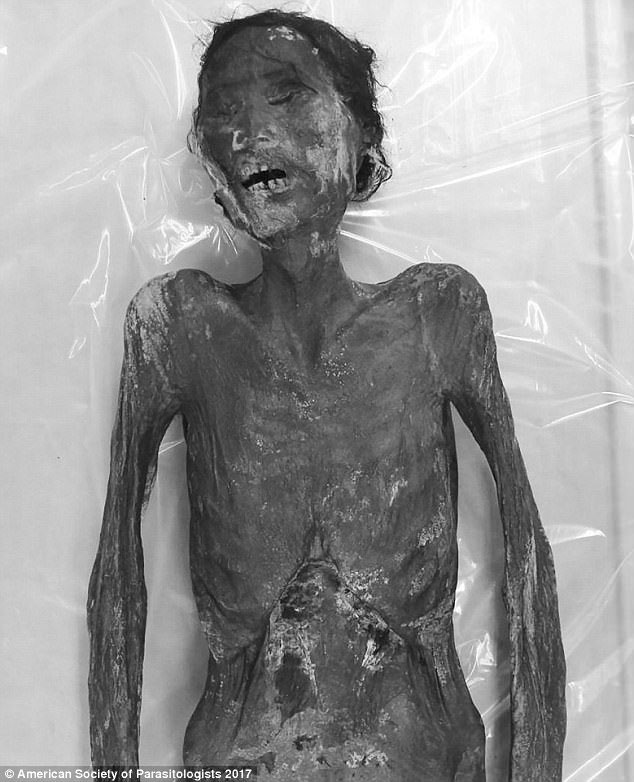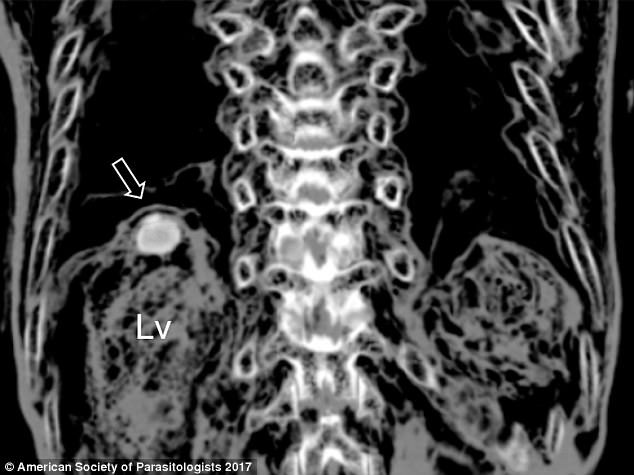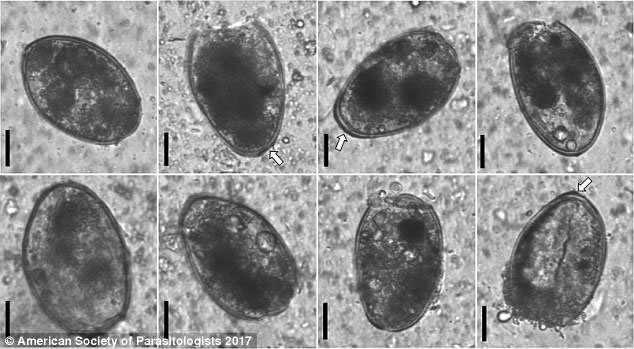Korea: Detection of eggs in mummy liver 375 years old
The 375-year-old mummy in Korea infected with parasites in the liver is the earliest case ever discovered.
According to the Daily Mail, researchers believe that men are infected with parasites by eating a living organism. This is considered a method of treating measles at that time.

Mummy man named Jing Lee, lived in the 17th century.
The 17th-century mummy man named Jing Lee . He died in 1643 at the age of 63. The latest scan showed a parasite's eggs in this man's liver.
Research on this mummy has just been published in the scientific journal Parasitology. The study was conducted by scientists at Seoul National Medical University.
The mummy was unearthed in 2014 in Cheongdo, South Korea in a tomb dating back about 400 years ago. The tomb was almost intact with both traces of clothing and clothes of the time.

Traces of fluke eggs in mummy liver.
During the scan (CT), the researchers identified abnormal traces in the mummy's liver. Korean researchers have directly examined mummies to find out more clearly.
That's when researchers discovered eggs of parasites Paragonimus westermani , also known as lung fluke.
This parasite specializes in attacking the lung area but can also invade and damage the meninges, causing severe headaches, atrophy of the nerves of the eyes, paralysis of the legs or mental disorders for patients.

This is the earliest case of parasitic infection ever recorded.
In Jing Lee's case, the parasite came to the liver and spawned here. Jing Lee may have been infected with the parasite by eating raw shellfish.
James Diaz, a researcher at the University of Louisiana, USA, says lung fluke today is common in Southeast Asia, Central and South Asia because people eat unprocessed seafood.
- World famous mummies
- Korea determines the mechanism of hepatitis C to damage the liver
- Discovered mummy of 500-year-old women in Korea
- 50% of liver cancer patients cannot be treated
- Deciphering the mystery of a beauty mummy 'Sleeping peace' 2,000 years
- Liver failure: Causes, symptoms and precautions
- Discover the mummy of cats when repairing the house
- Terrifying secrets hidden in the 4,000-year-old mummy series
- Discover the mystery of the famous mummy
- The mummy 'princess' nearly 1000 years old still has hair, long eyelashes curled
- The oldest mummy 'mummy'
- New discovery of mummy Virgin 500 years old
 Discovered an ancient centipede fossil 99 million years old
Discovered an ancient centipede fossil 99 million years old Discovered bat-like dinosaurs in China
Discovered bat-like dinosaurs in China Discovered a 200-year-old bronze cannon of the coast
Discovered a 200-year-old bronze cannon of the coast Discover 305 million-year-old spider fossils
Discover 305 million-year-old spider fossils